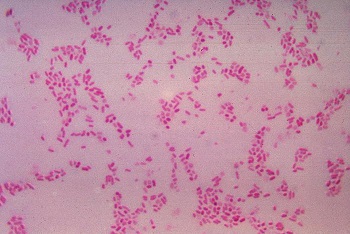Bacteroides spp. - Introduction, Classification, Culture, Biochemical Characters
Classification of Bacteroides spp.
Domain: Bacteria
Phylum: Bacteroidota
Class: Bacteroidia
Order: Bacteroidales
Family: Bacteroidaceae
Genus: Bacteroides
Introduction of Bacteroides spp.
Bacteroides spp. is obligate, anaerobic, gram-negative rods, non-sporing, non-motile, and are normal flora of the human GI tract (typically isolated from mucosal surfaces of the oral cavity and GI tract).
In general, an infection caused by Bacteroides spp. group occurs below the diaphragm.
This classification is done on the basis of the microorganism's ability to break down types of sugar as a food source.
Asacchrolytic => Prophyromonas
Eg: Prophyromonas gingivalis (periodontal disease)
Moderately saccharolytic => inhibited by 20% bile => Pervotella
Eg: (Prophyromonas melanogenica, Prophyromonas denticola, Prophyromonas buccalis)
Saccharolytic => grow in 20% bile
Eg: Bacteriodes (Bacteroides fragilis). The commonly isolated spp. In clinical specimen is B. fragilis
Cultural characteristics of Bacteroides spp.
They can be cultured in artificial media- it forms non-hemolytic grey colonies of 1-3mm diameter in anaerobic BA.
In Bacteroides Bile Esculin medium (BBE), it gives glistering convex light to grey-colored colonies surrounded by a grey zone is obtained.
Other culture mediums for Bacteroides spp. are Thioglycolate broth (liquid medium) and Robertson’s cooked meat medium.

Fig: Bacteroides spp. gram-staining (Source: Wikipedia)
Biochemical characteristics of Bacteroides spp.
The biochemical characteristics of Bacteroides spp. includes:
ferments sucrose
grows in presence of 20% bile
Indole: Negative
Urease: Negative
Catalase: Positive
Oxidase: variable
Esculin hydrolysis: Positive
Arabinose: Negative
Glucose: Positive
Lactose: Positive
Maltose: Positive
Rhamnose: Negative
Trehalose: Negative
Salicin: Negative